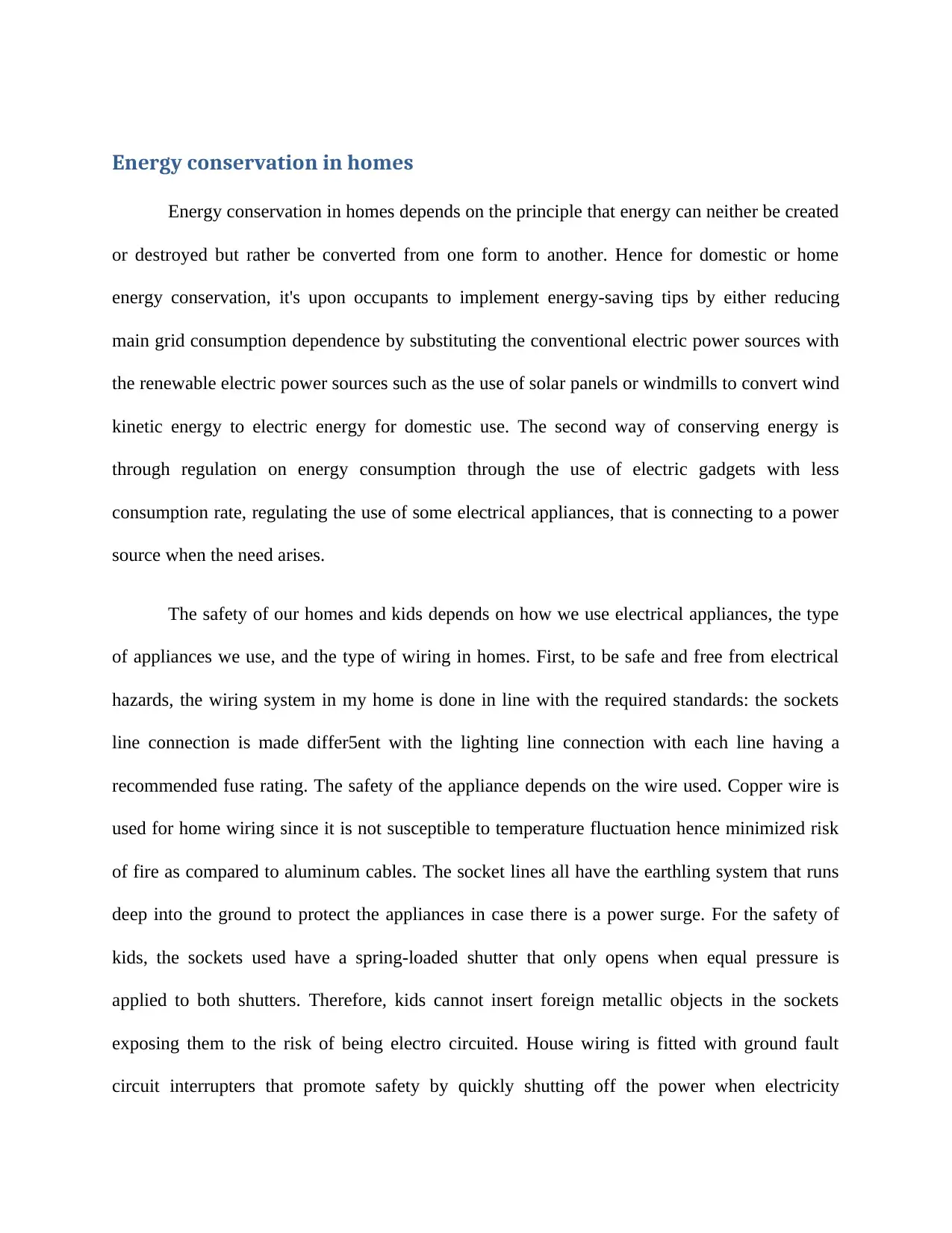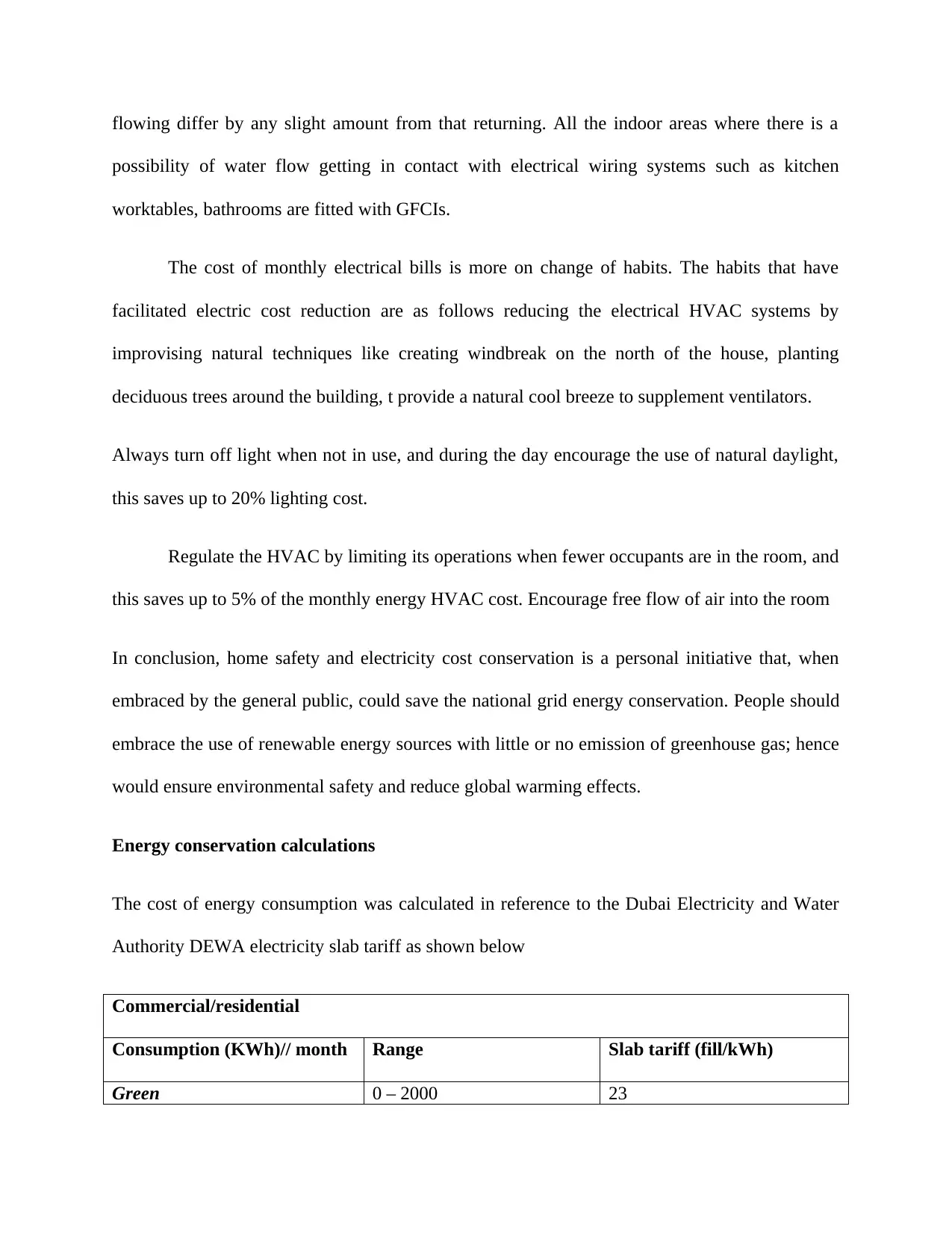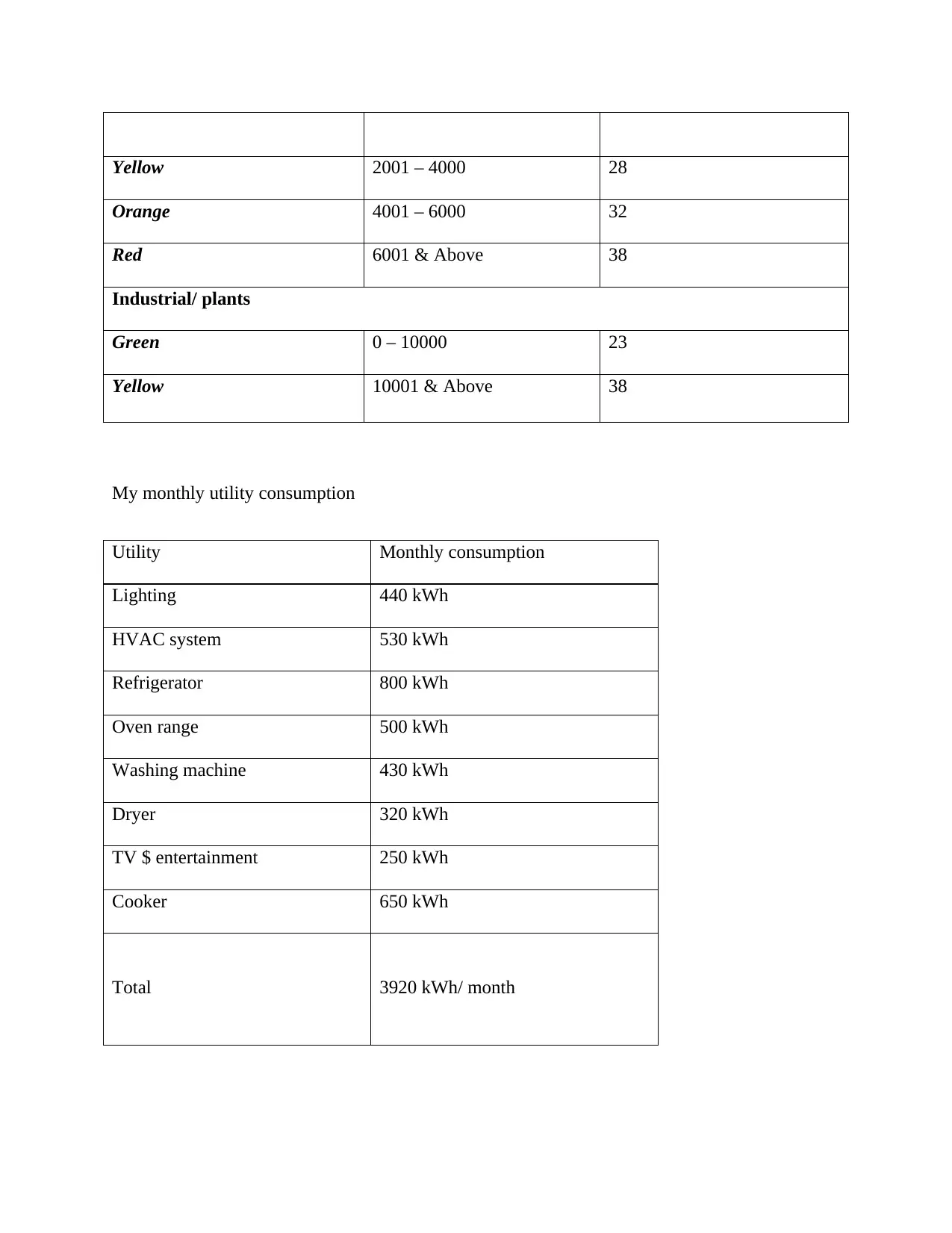Energy Conservation in Electrical Systems: A Detailed Report
VerifiedAdded on 2022/09/23
|5
|702
|28
Report
AI Summary
This report analyzes energy conservation in homes, focusing on electrical systems, safety measures, and cost reduction strategies. It discusses the principles of energy conservation, emphasizing the importance of renewable energy sources and efficient energy consumption. The report details practical tips for reducing energy usage, such as using energy-efficient appliances, optimizing HVAC systems, and utilizing natural daylight. It also includes a breakdown of electrical system safety measures, including proper wiring, socket design, and the use of ground fault circuit interrupters. Furthermore, the report calculates monthly energy consumption based on the Dubai Electricity and Water Authority (DEWA) tariff, providing insights into electricity costs and potential savings. Overall, the report highlights the significance of individual actions in conserving energy and promoting environmental sustainability.
1 out of 5












![[object Object]](/_next/static/media/star-bottom.7253800d.svg)